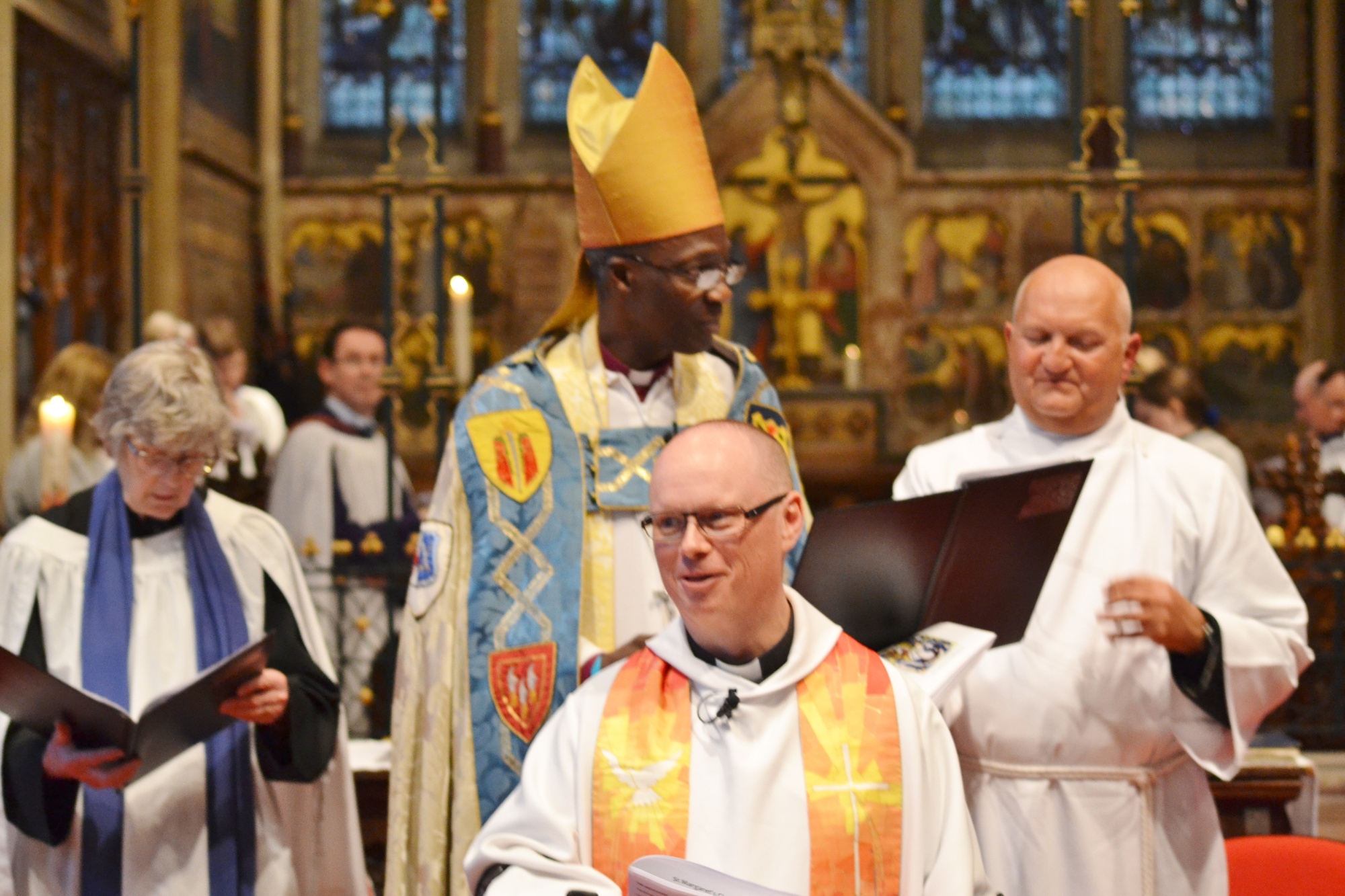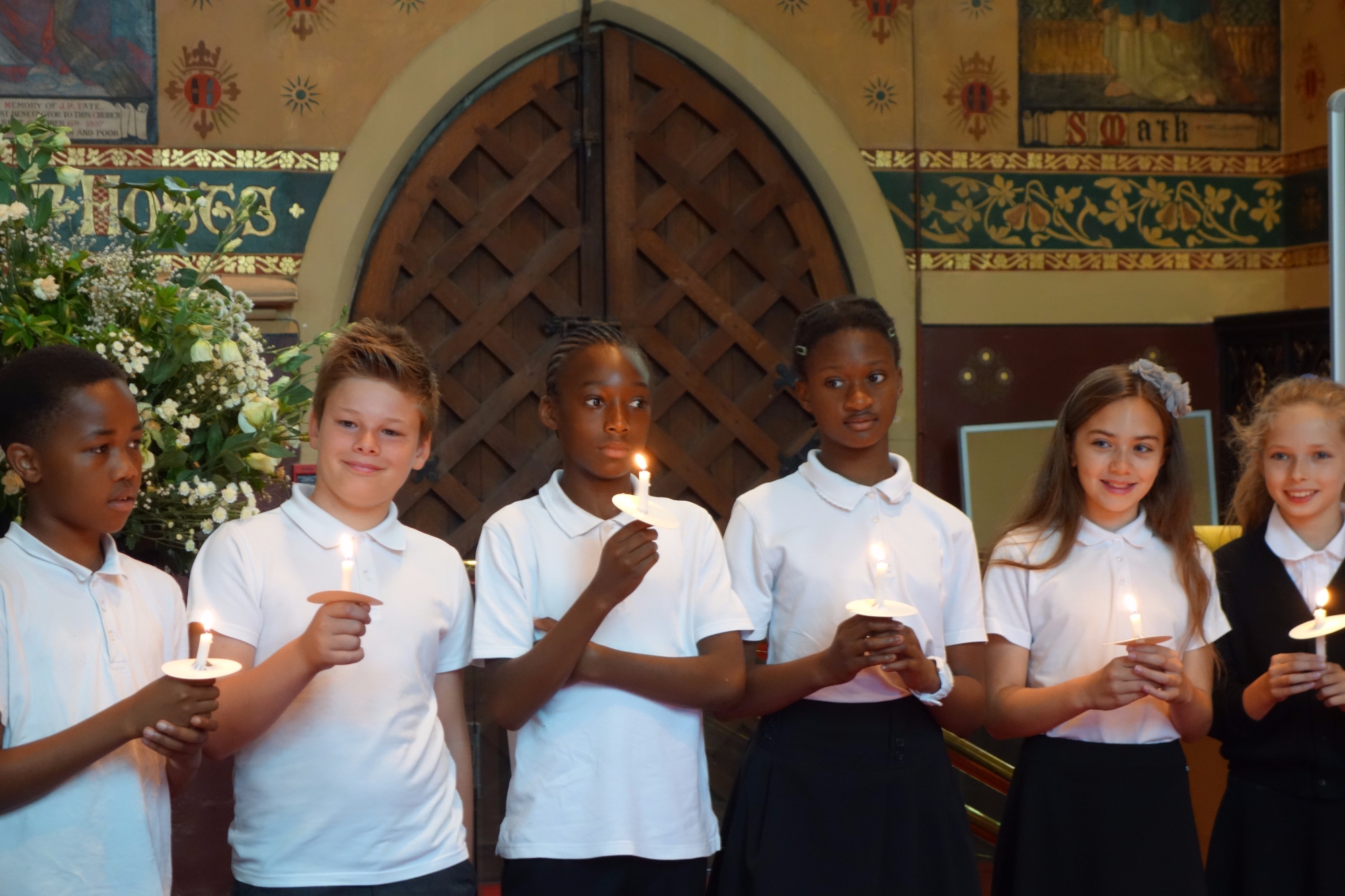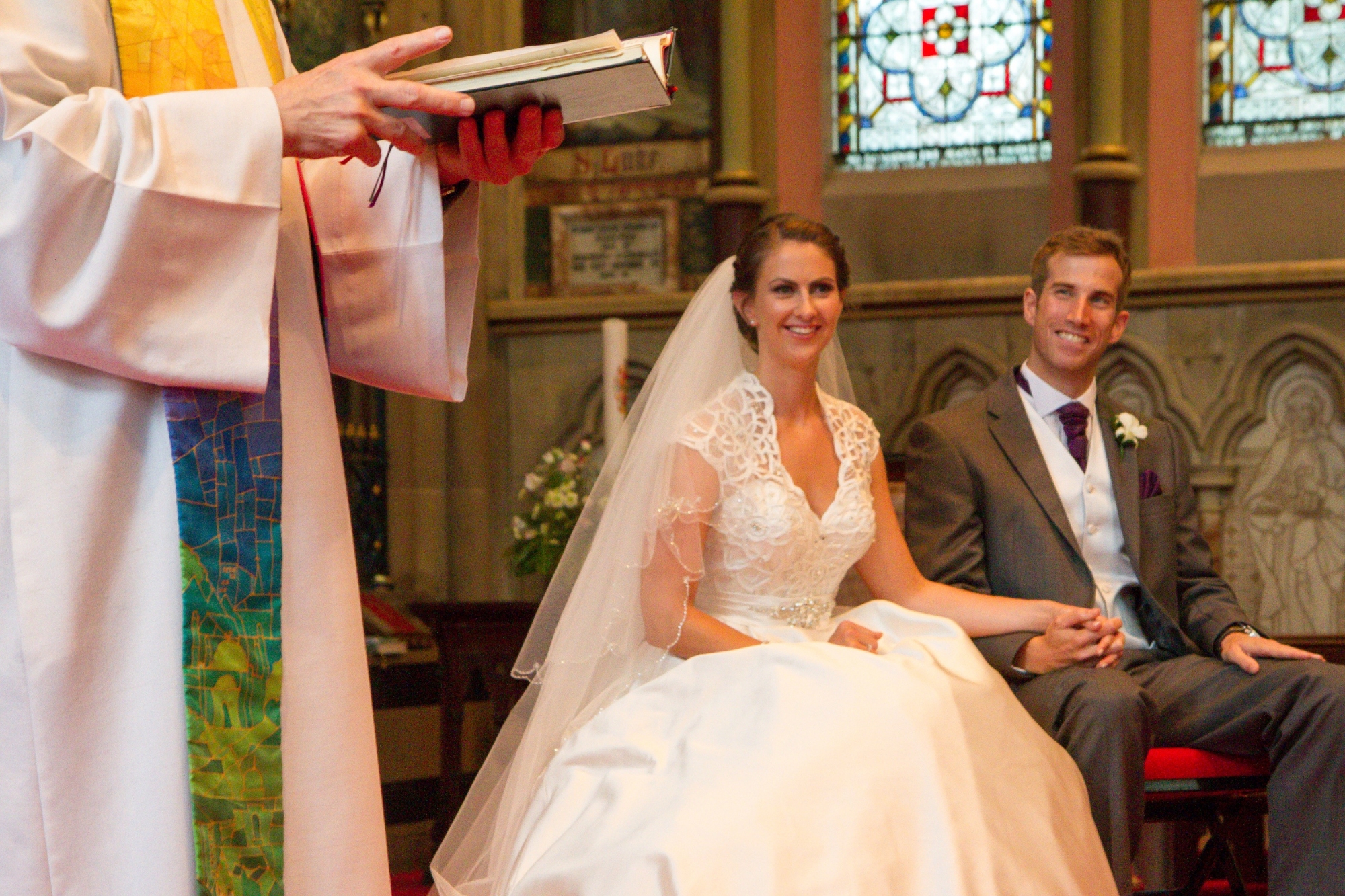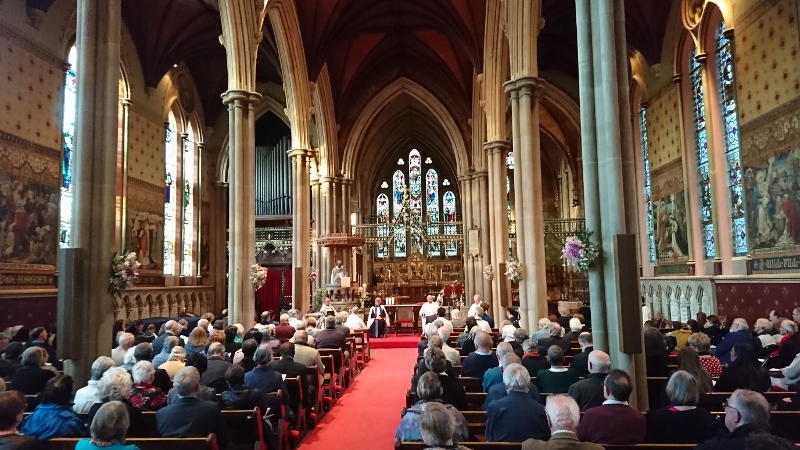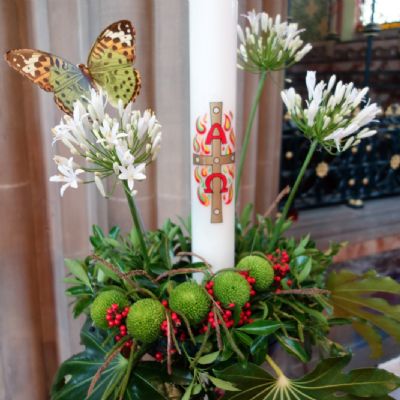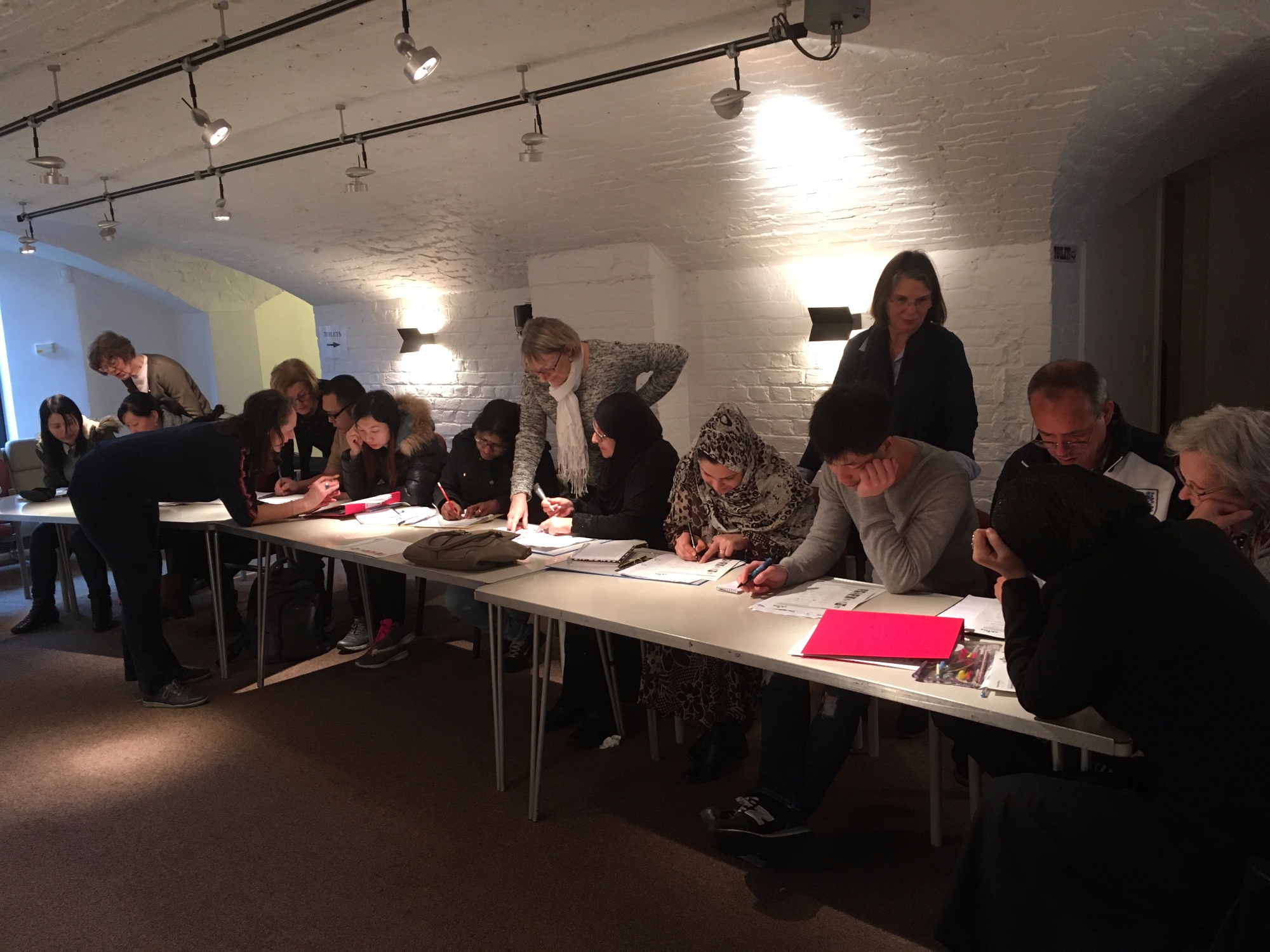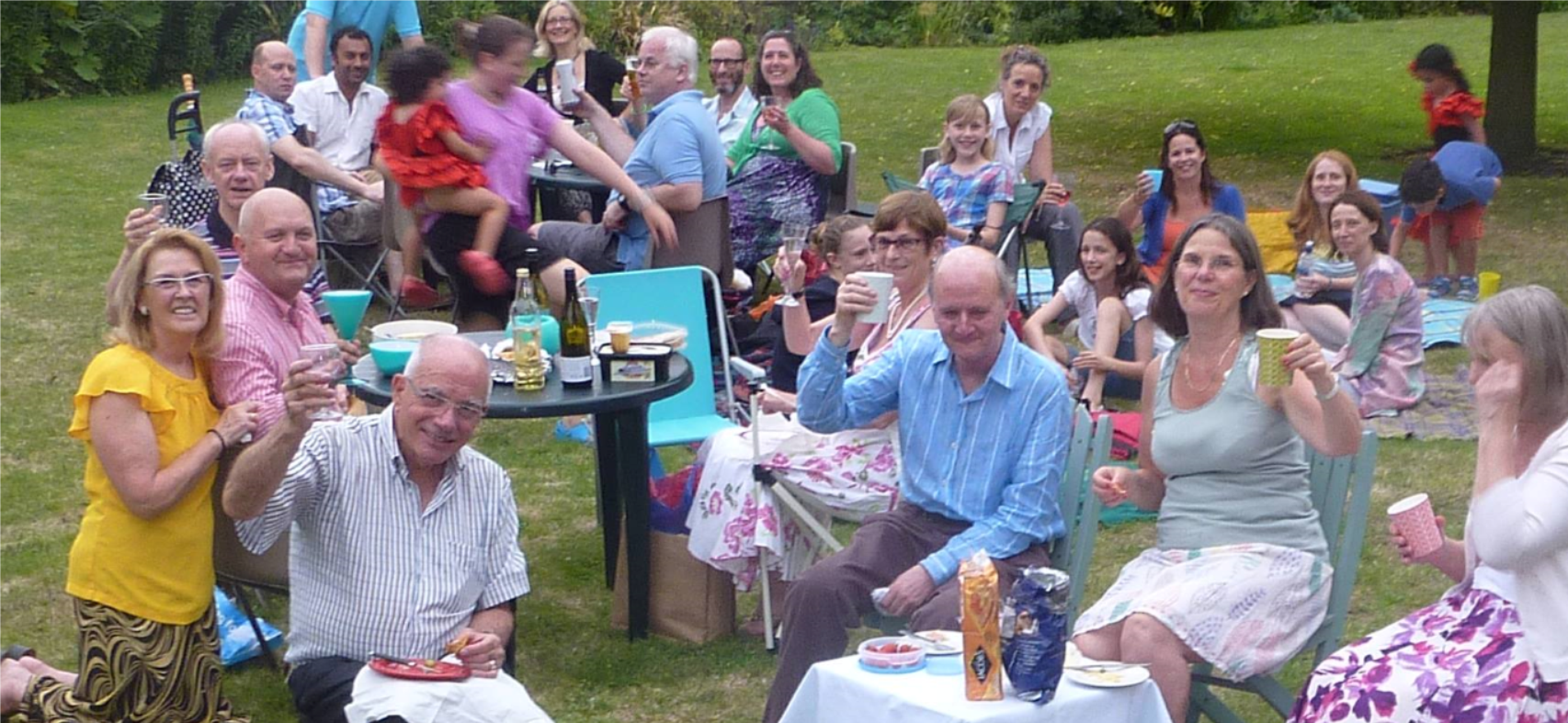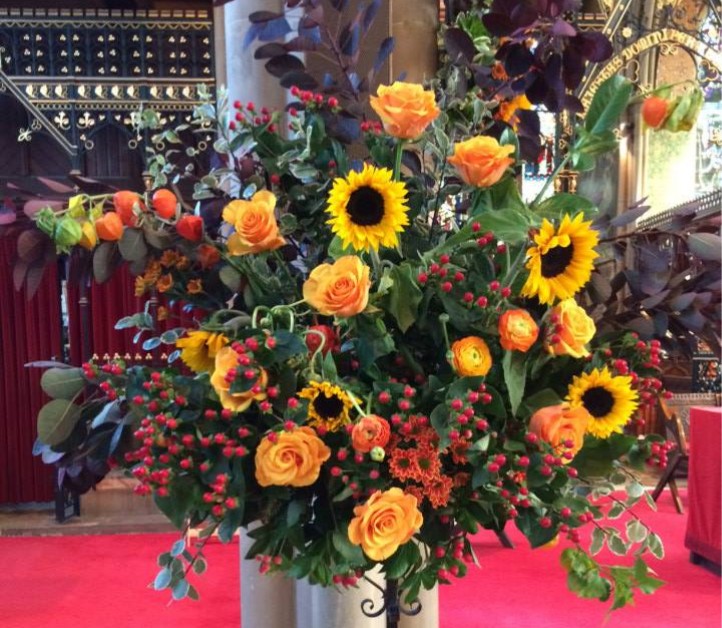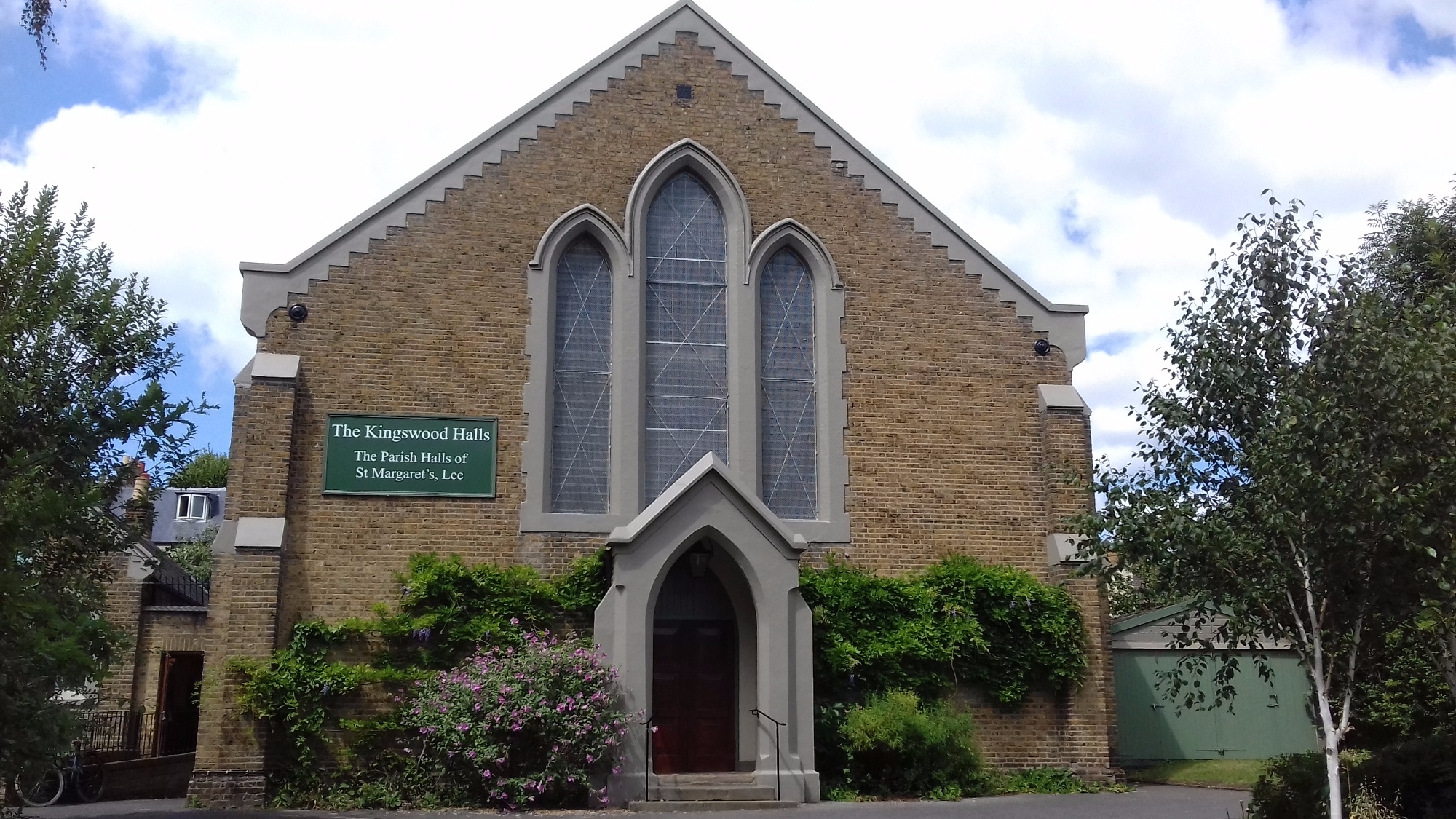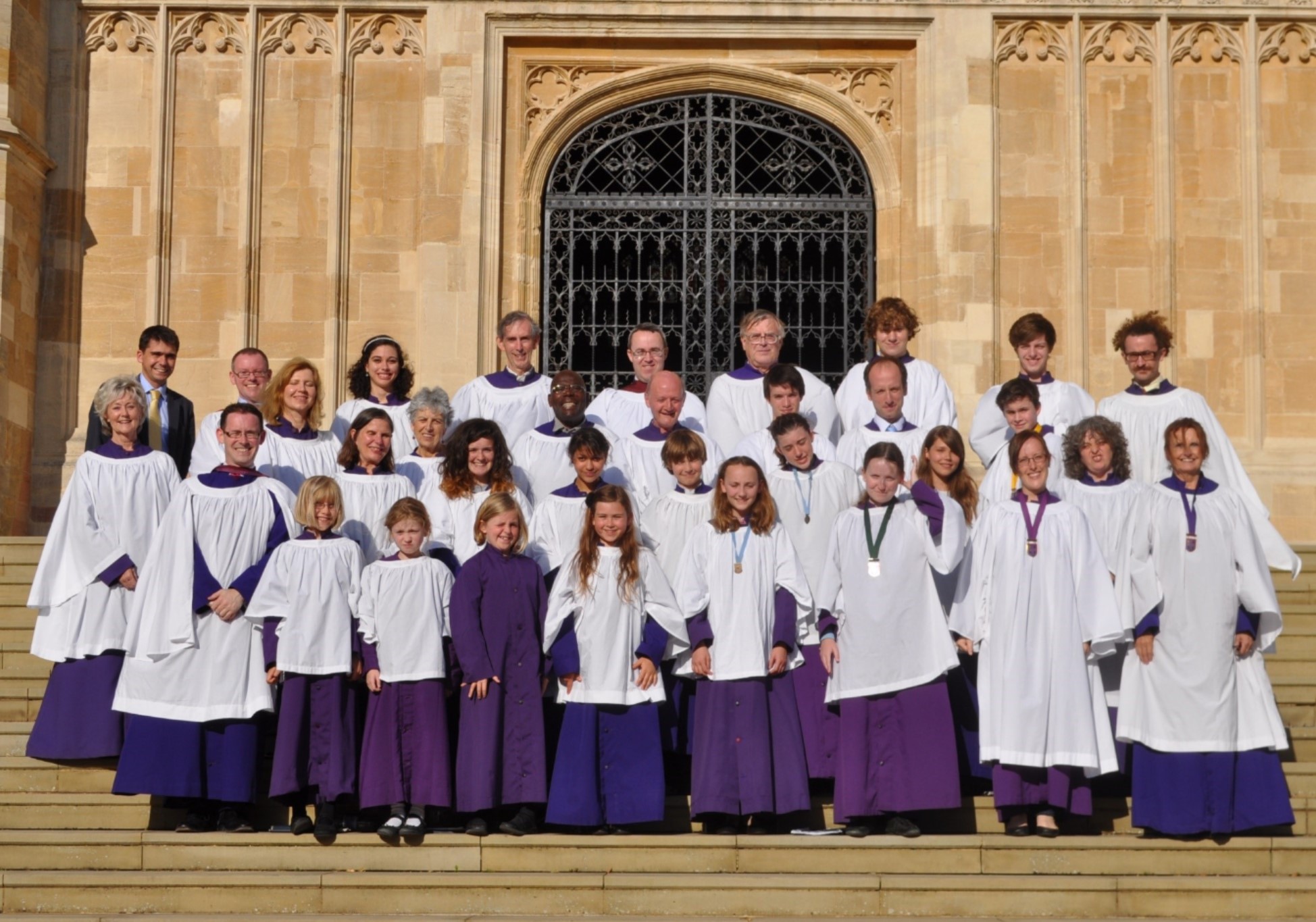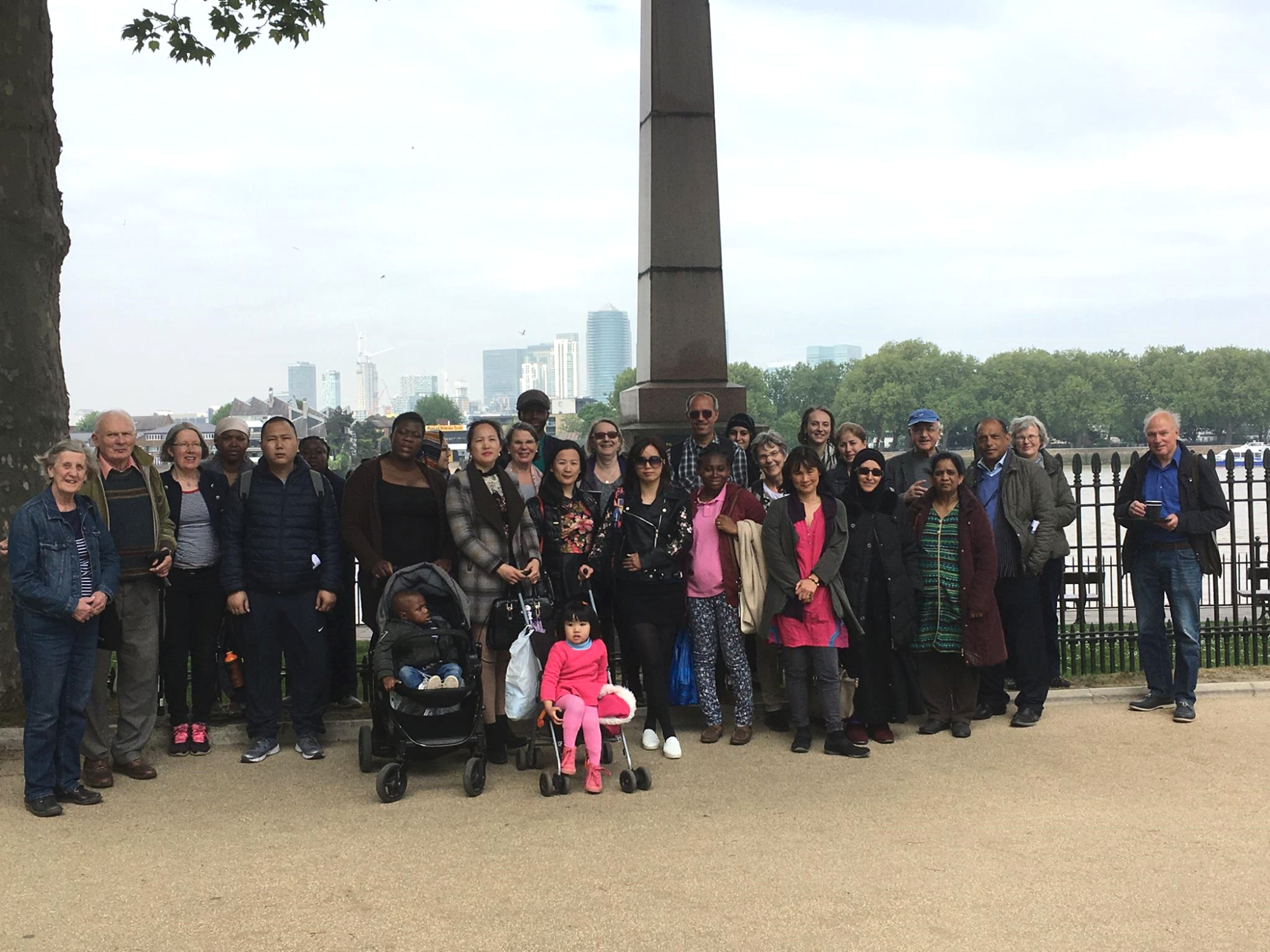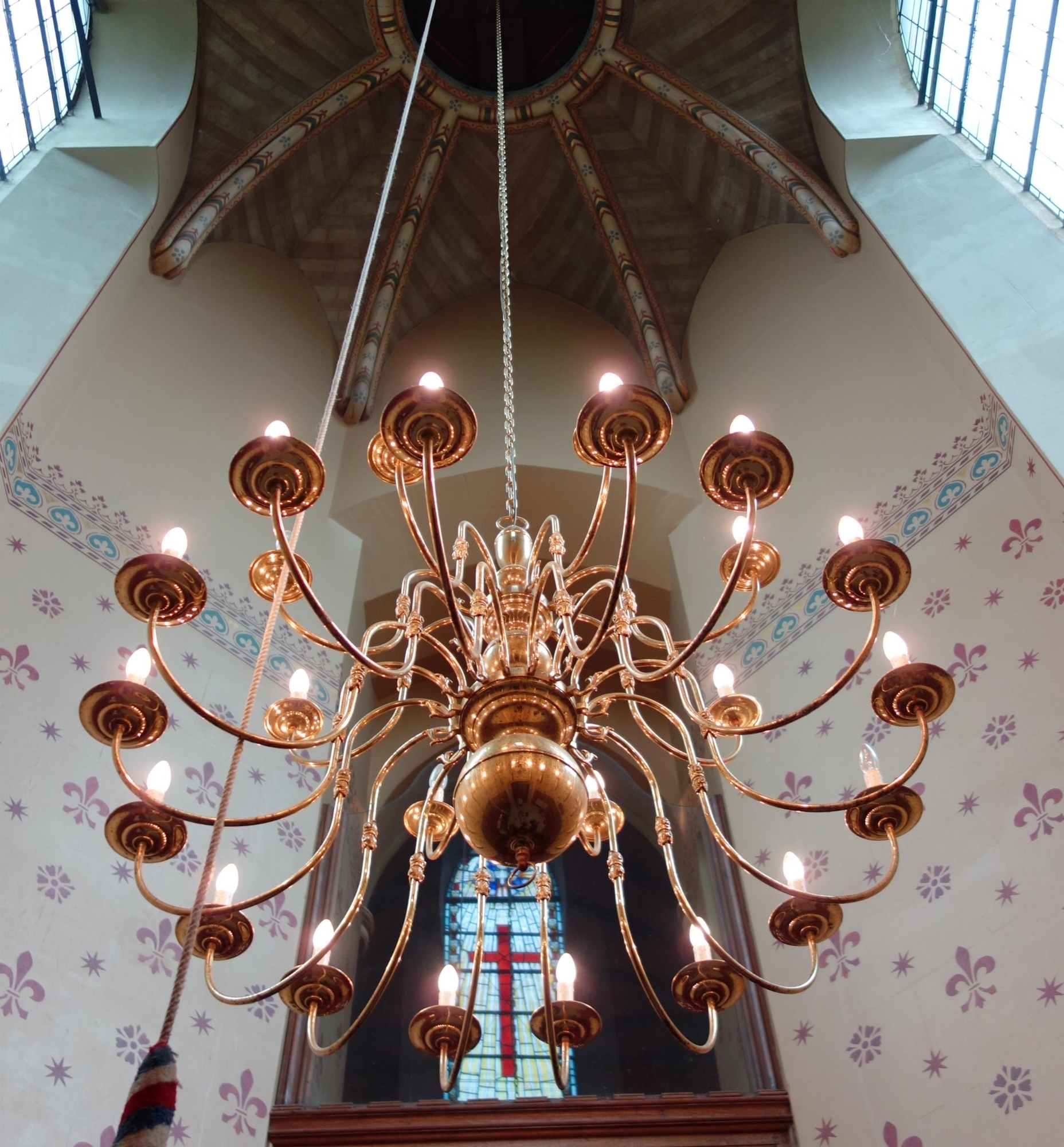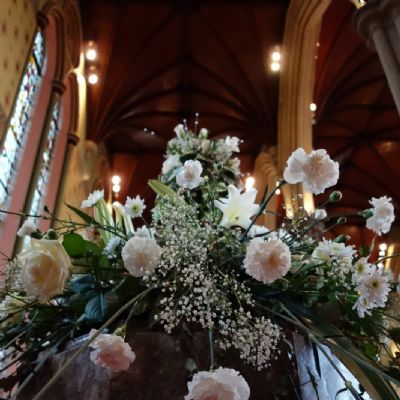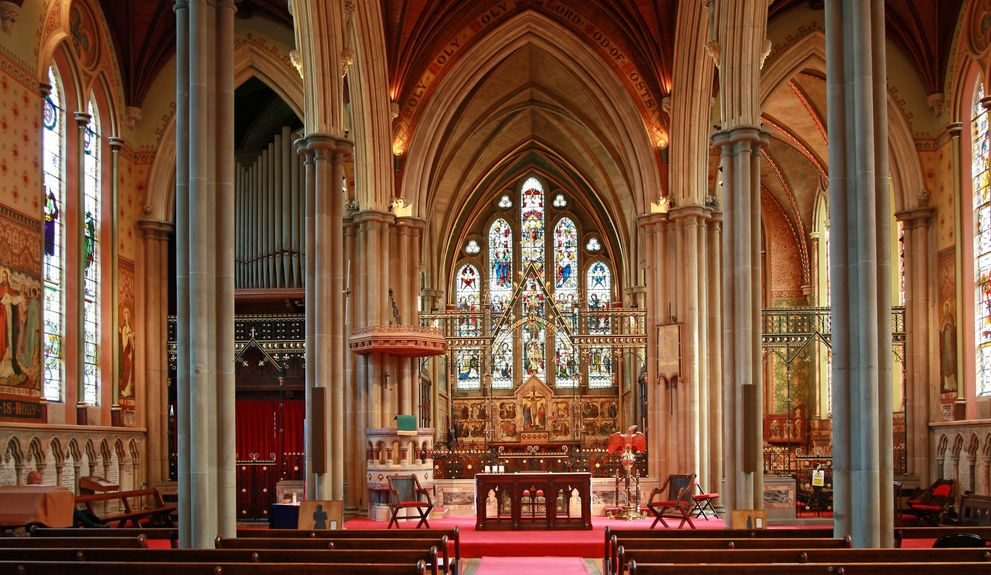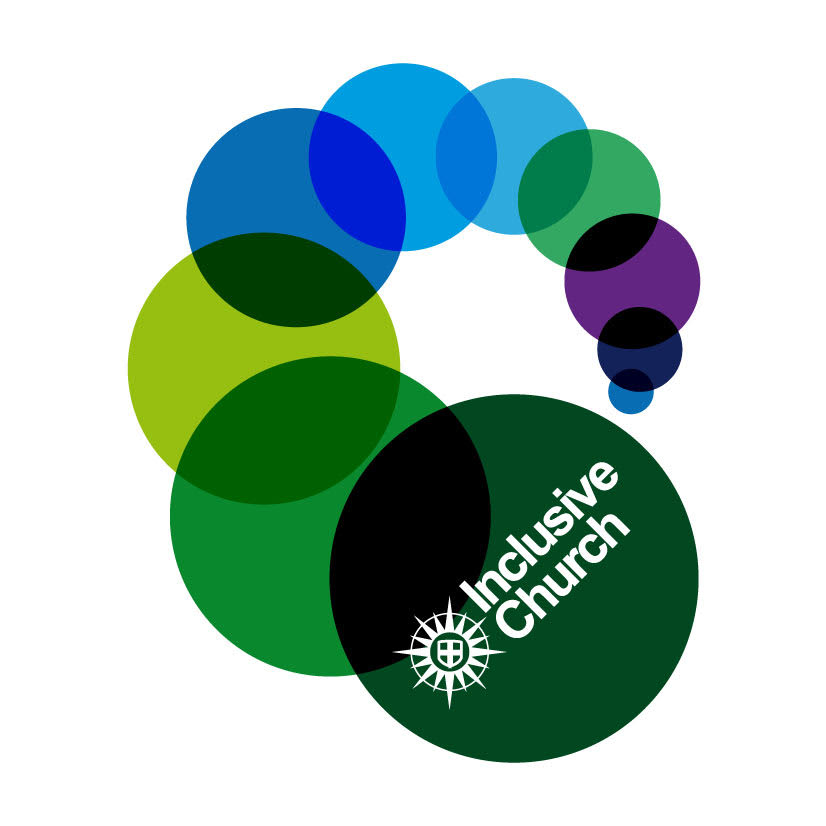5. Lady Chapel
5. Lady Chapel
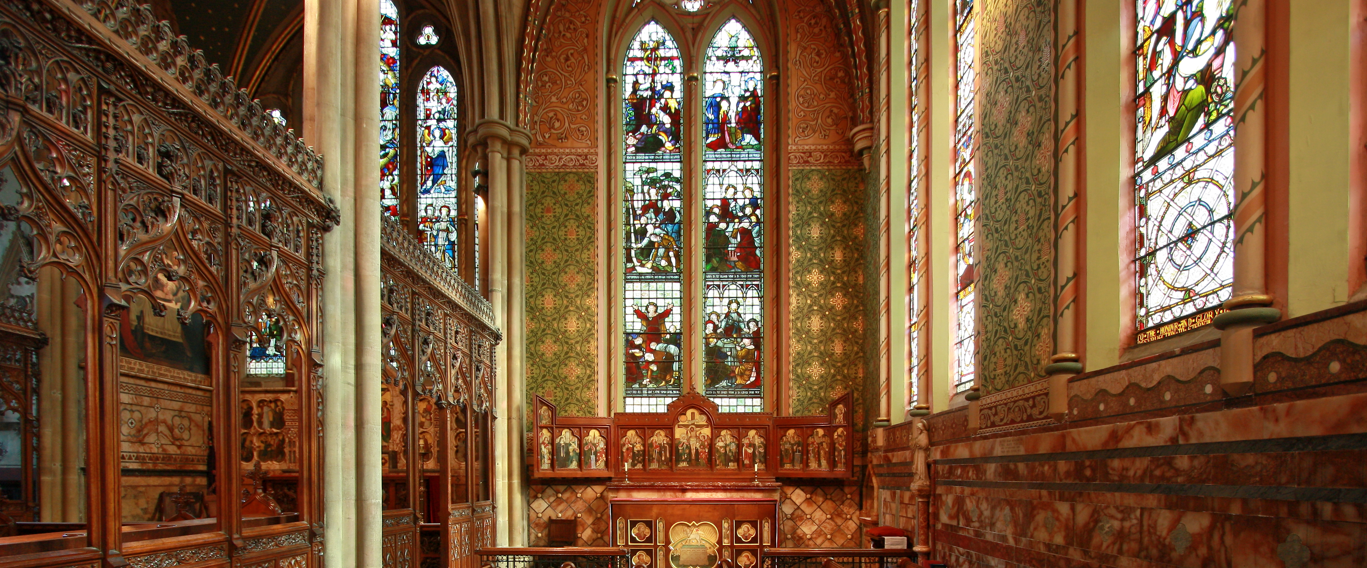
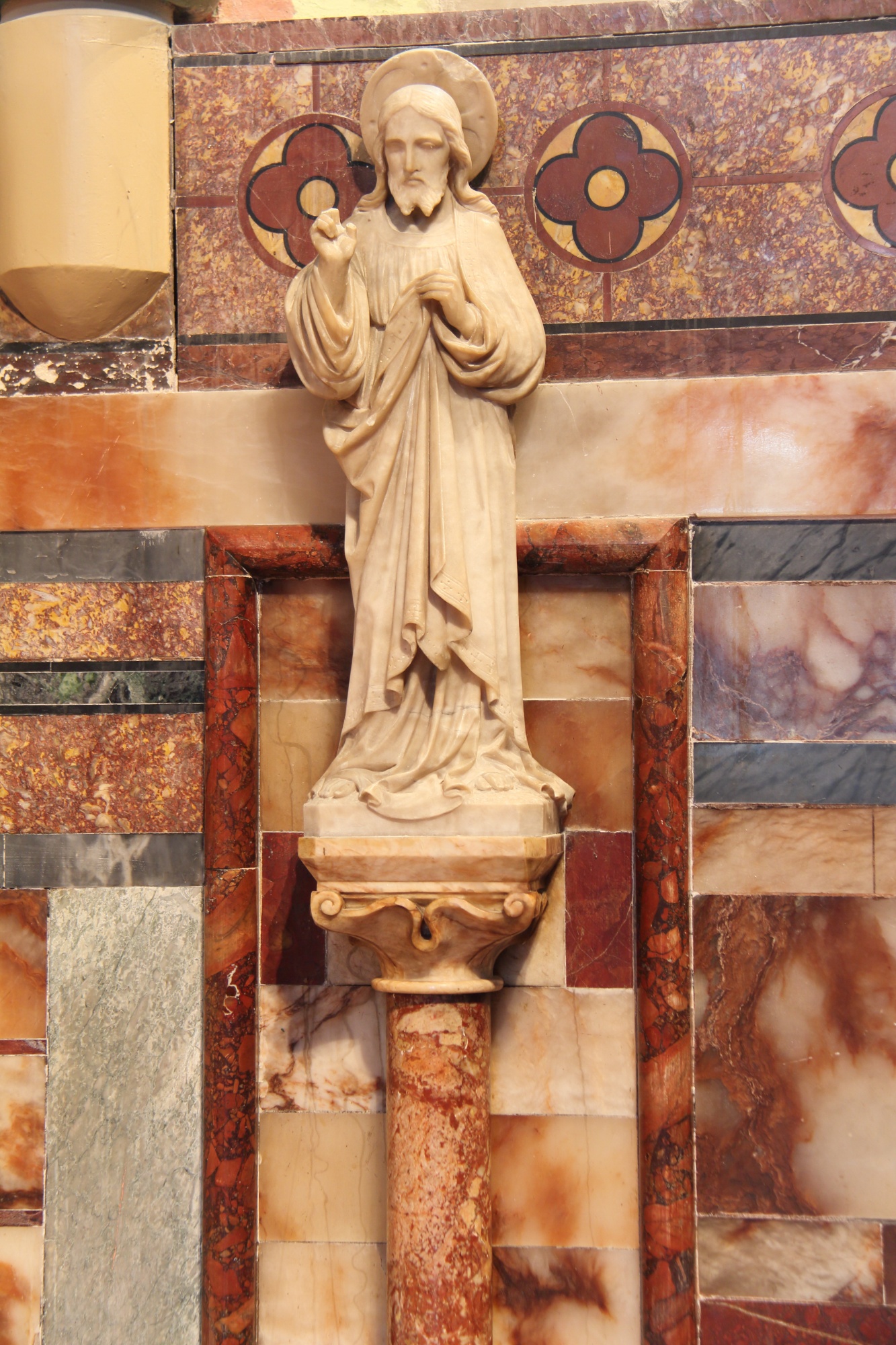
Part of the church was set aside for use as a Lady Chapel in 1881. The walls are faced with marble mosaic with a carved figure of Christ in blessing; the alabaster frieze was added in 1952. The altar has a strong pre-Raphaelite flavour and is designed in panels in which the four evangelists are grouped around the Agnus Dei. The Lamb of God is shown carrying the banner of the resurrection, also the banner of St George and the origin of the common pub name “Lamb and Flag”.
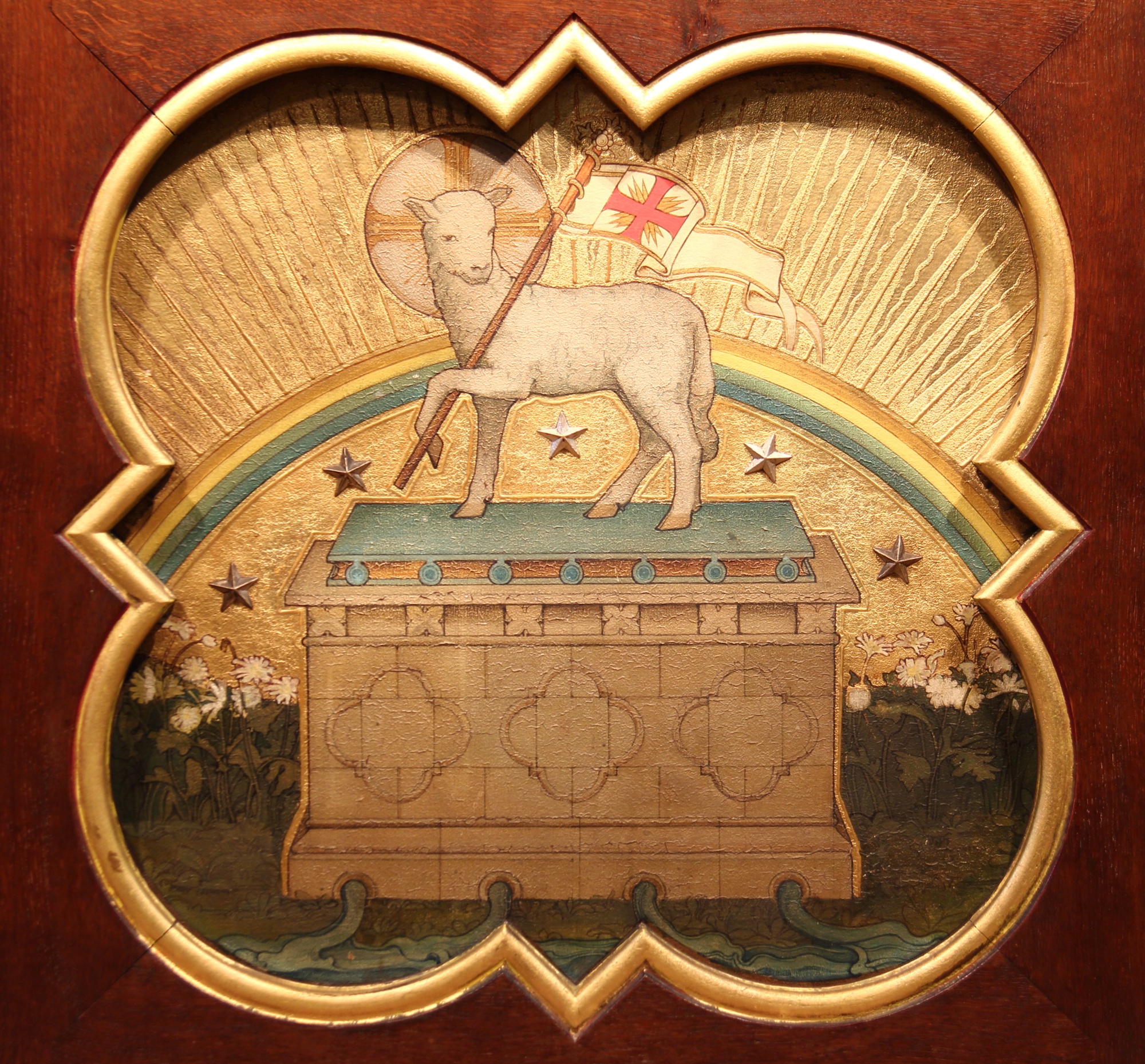

The triptych over it depicts the crucifixion in the centre, with saints on either side.
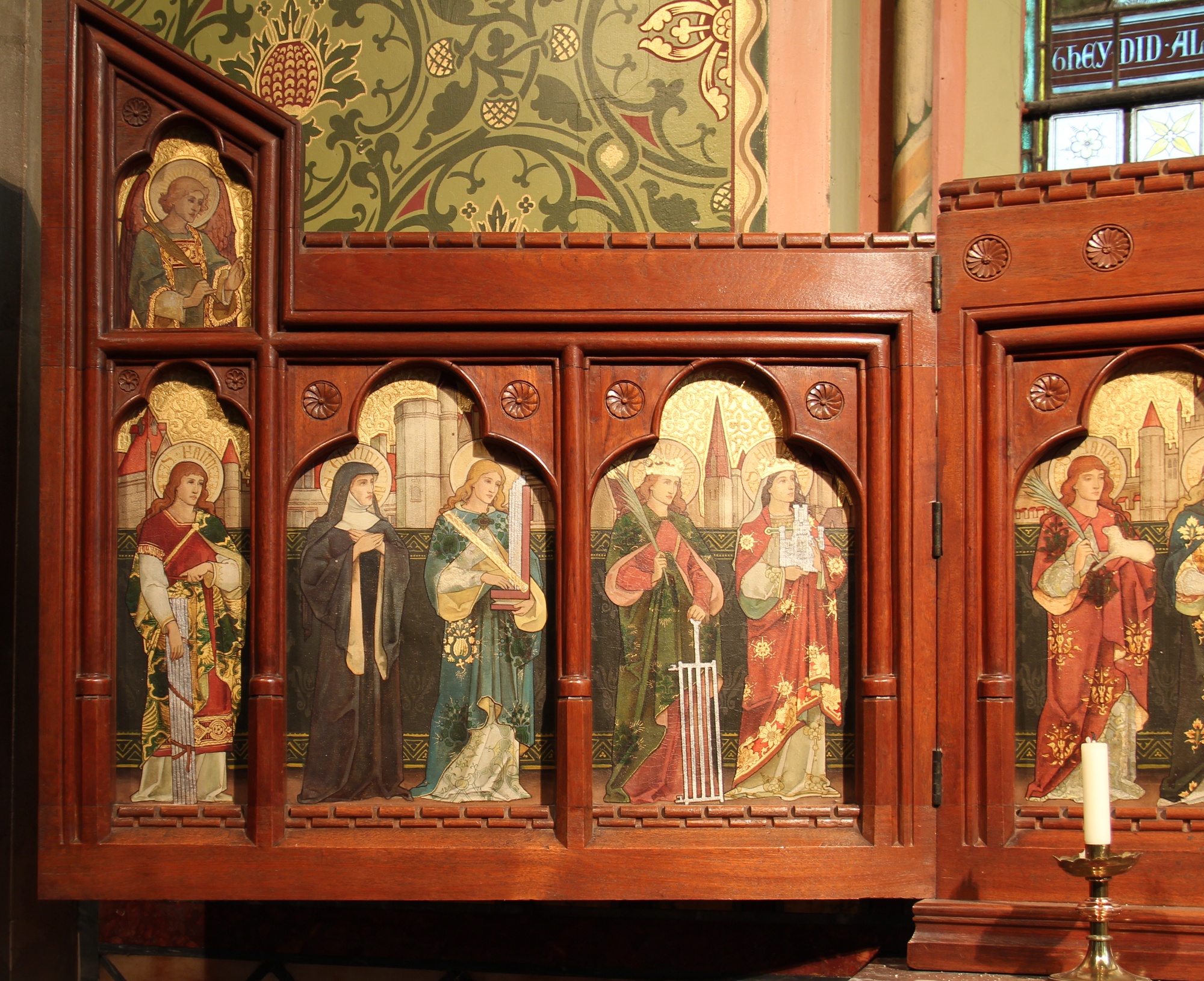
The female saints on the left are:
St Faith - Reputedly martyred under the Emperor Diocletian in 287, she is shown holding the rods of the metal frame on which she was burned to death.
St Ethelburgha - Little is known of this Abbess of Barking who died in 676 beyond the Venerable Bede's comment that she showed "holiness in life and constant solicitude for those under her care, attested by miracles from above”.
St Cecilla - For refusing to renounce her Christianity, Cecilia was sentenced to be stifled to death in her bathroom. This failed and she was unsuccessfully beheaded three times before dying of her wounds three days later. She became the patron saint of music in the 16th century, reputedly stemming from the music played at her wedding. She is often shown with an organ and here appears to carrying a portable instrument.
St Agatha - The story of Agatha is that she endured numerous tortures including having her breasts cut off and she is often depicted carrying these as patron saint of bell-founders. More modestly, our representation shows her with a martyr's palm and the gridiron on which she was burned.
St Ethelreda- Founder of Ely Cathedral (which she is seen holding) and patron of - Cambridge, Ethelreda was the most revered of Anglo-Saxon female saints. Also known as Audrey, her death in 679 from a neck tumour was interpreted as a punishment for the vanity of her early years as a royal princess. Cheap necklaces sold at subsequent St Audrey's Fairs were often described as "tawdry”.
St Agnes - A virgin martyr who was stabbed in the throat (a common form of Roman execution) for dedicating herself to God and refusing to marry. She appeared in visions to her parents carrying a lamb, probably a play on her name, agnus being Latin for lamb.
St Lucy-Another Roman virgin martyr who was killed by being stabbed in the throat. As her name means "light", she became the patron saint of eye diseases and, typically, is shown here carrying her eye-balls on a plate.
St Catherine-Has one of the most entertaining lives of the early martyrs and is here she standing next to the spiked wheel on which she was tortured. She protested to the Emperor Maxentius against the worshipping of idols. He sent fifty philosophers to argue with her when she defeated their arguments, they were all burned alive as punishment. Catherine was beaten and imprisoned but fed by a dove while incarcerated. Next she was tied to her wheel which fell apart and injured many on-lookers with its splinters. Her constancy led to the conversion of two hundred soldiers who were immediately beheaded. Finally Catherine herself was beheaded and her veins flowed with milk not blood. Her body was carried by angels to Sinai where her monastery was founded.
St Margaret-But which one is unclear as she is wearing a crown (Margaret of Scotland) and has a dragon (Margaret of Antioch).
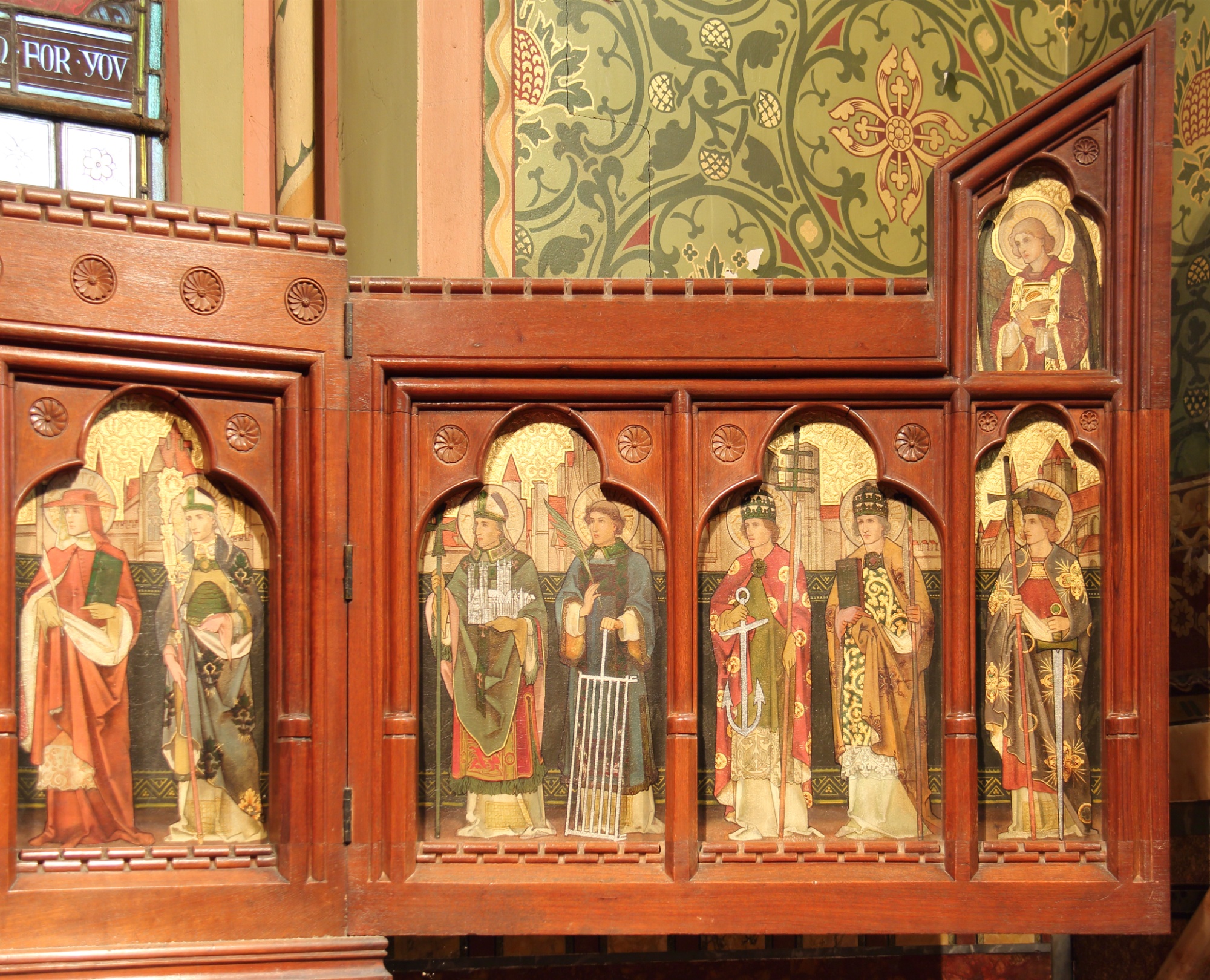
On the right are the men:
St Edmund-defeated by a Viking invasion in 869, this English king refused to renounce his faith and was martyred by being tied to a tree and used for target practice. He can be seen here holding two arrows to mark this. He is buried at Bury St Edmunds.
St Hugh - Bishop of Lincoln from 1186 to 1200 he is shown holding the rebuilt cathedral which he started.
St Jerome-Learned in both Hebrew and Greek, Jerome translated virtually the whole of the Bible into Latin for the first time producing the Vulgate version. He is shown here anachronistically dressed as a cardinal (he was secretary to Pope Damascus) and holds his pen and Bible.
St Ambrose - Elected Bishop of Milan in 374 despite not yet being baptised, he was a major early preacher and theologian who went on to baptise St Augustine of Hippo when the latter visited Milan. Renowned as a skilful peace-maker with a honeyed tongue, he is shown holding a beehive.
St Augustine - This is St Margaret's third representation of St Augustine. Here he is shown holding Canterbury Cathedral which he founded. He is wearing a pallium-a narrow lamb’s wool stole which is a symbol of papal authority bestowed on archbishops. This authority was used by Augustine to found another archbishopric in York.
St Lawrence - Deacon and martyr, Lawrence carried his palm of martyrdom and wears a deacon's robes. He was burned on a gridiron after being asked to hand over his church's valuables and presented to authorities the poor and sick of the parish with the words "Here is the church's treasure."
St Clement - Clement, shown here wearing his papal tiara, was exiled to the Crimea by the Emperor Trajan in 100. He was martyred by drowning tied to an anchor which he holds. He carries the triple-barred cross now more usual in the Eastern Churches.
St Gregory - in contrast to the East Window, Gregory is here shown in a papal tiara rather than just the mitre of the Bishop of Rome.
St Alban - Another appearance for St Alban after the East Window.
The Lady Chapel east window consists of three pairs of illustrations in which an Old Testament scene foreshadows one from the New Testament. Moses lifted up the serpent in the wilderness as Jesus was to be lifted up upon his cross; while the water and manna from the rock foreshadow the bread and wine with which God sustains his church today. The manna that dropped from heaven to feed the Israelites is thought by some to have been a mixture of coriander seed and honey.
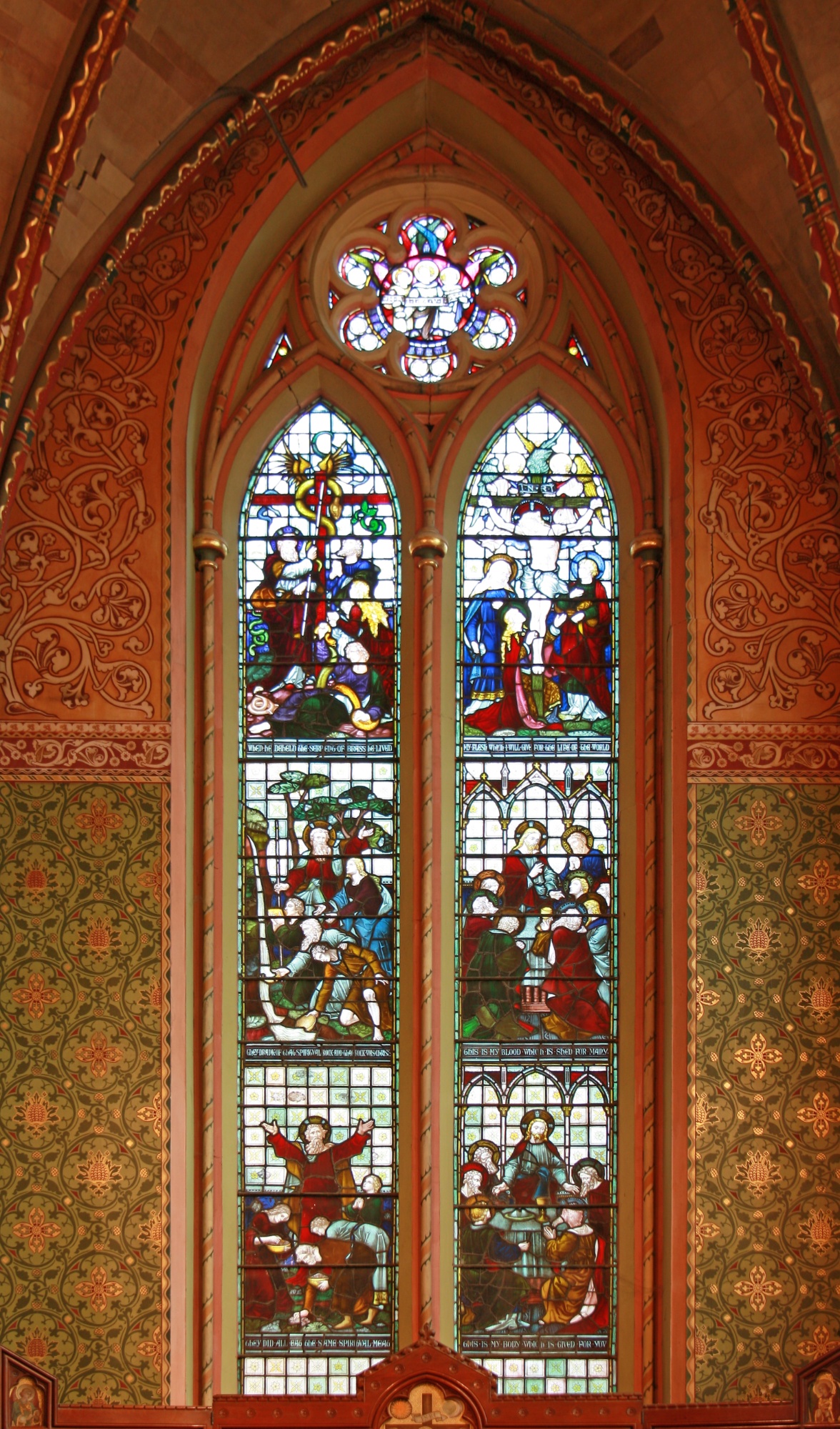
Of the two other double windows, the first, given in memory of Dr William Carr who was secretary of the Church for many years, depicts St Mary and St Martha at the Raising of Lazarus and at the preparation of the meal he ate with them. The second pair shows St Mary Cleophas (sister of the Virgin Mary and mother of St James the Less, who stood at the foot of the cross-John 19:25) and St Mary Magdalene with the risen Christ.
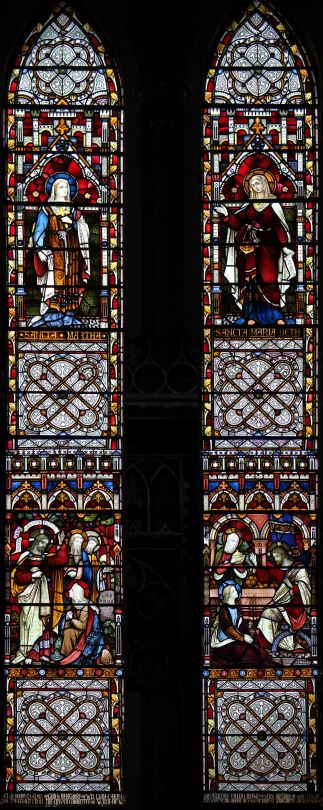
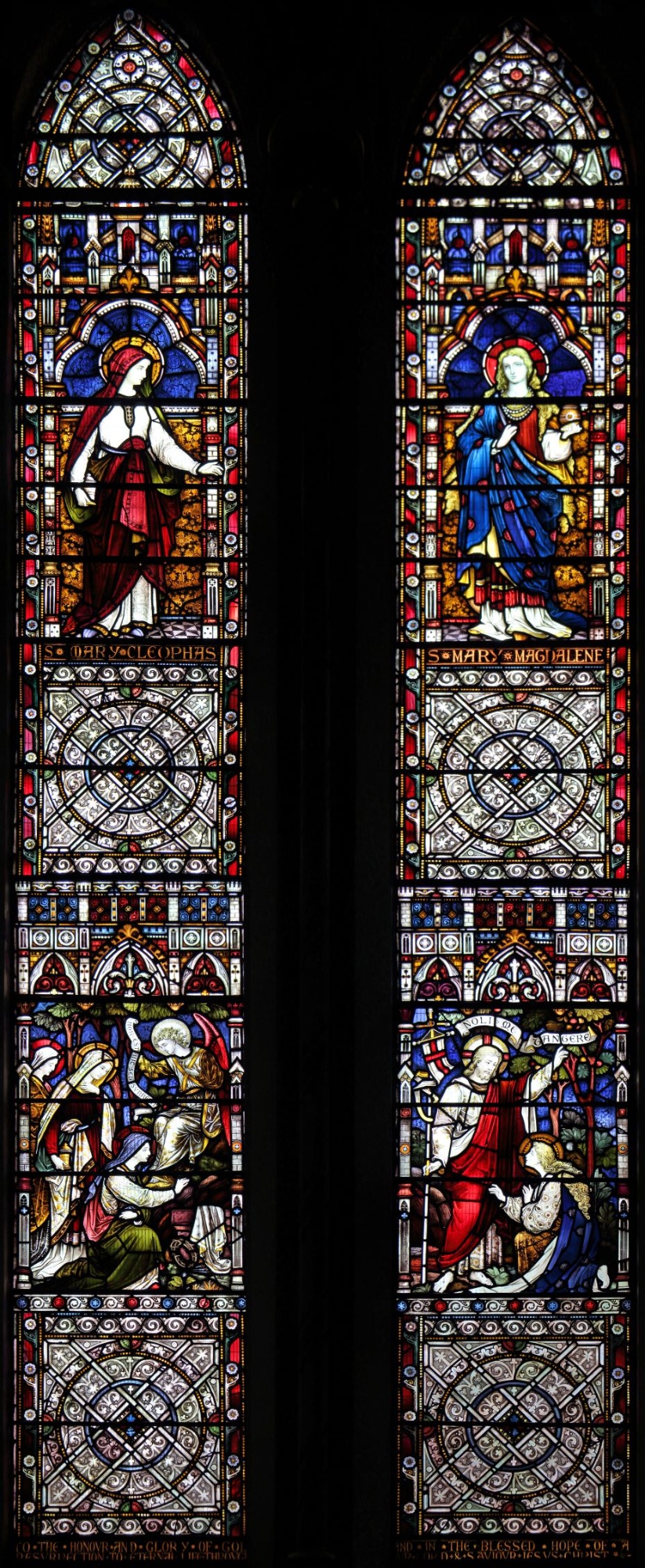
Richard Meddings (Rector 1910-1922) is commemorated by a bronze plaque on the south wall and by the painting of St Margaret which hangs above it. The altar rails were provided in 1926 and the floor, like that surrounding the High Altar, is covered with Minton tiles.
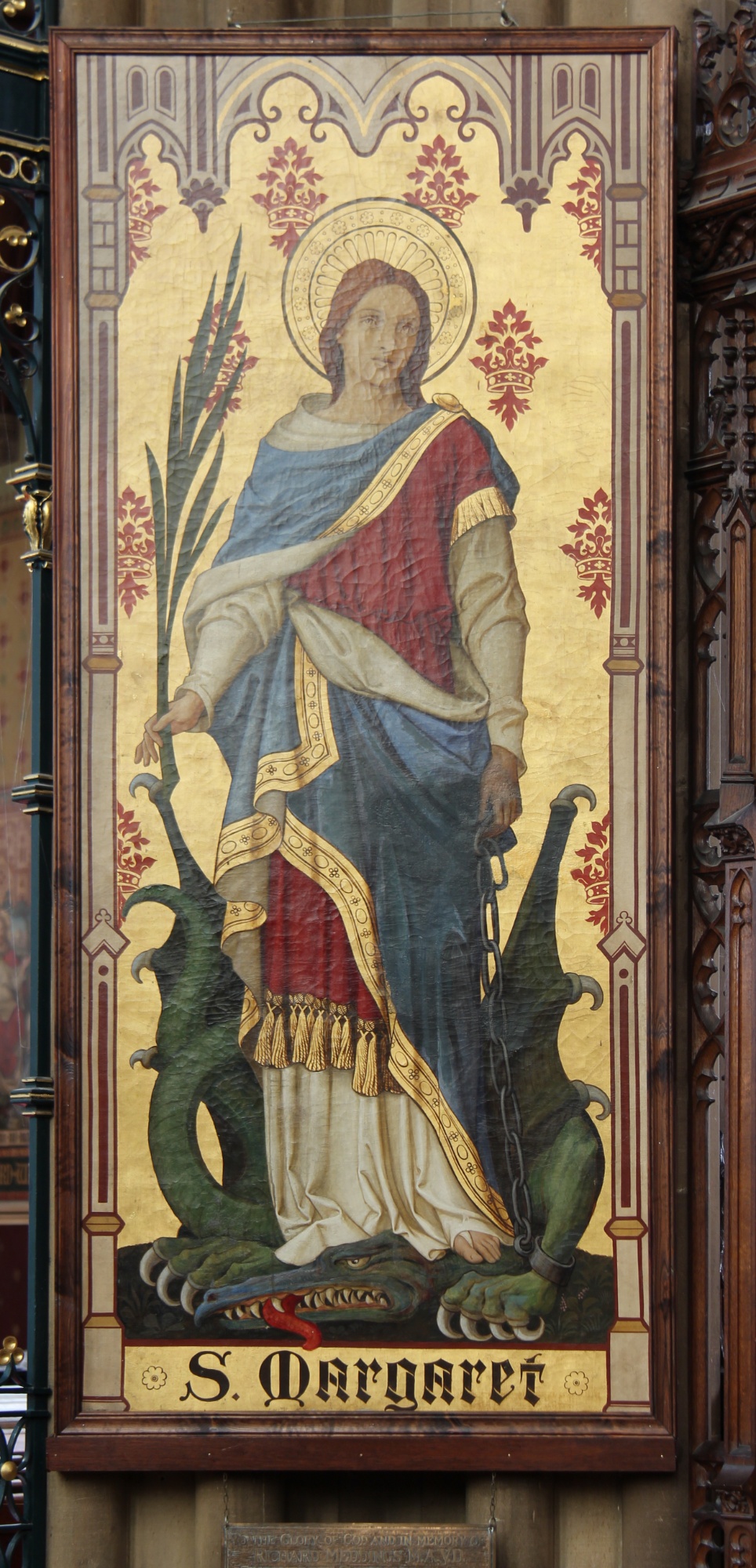
There is a large oil painting of St Margaret of Antioch at the rear of the Chapel and a copy of it on the screen at the back of the Church.

